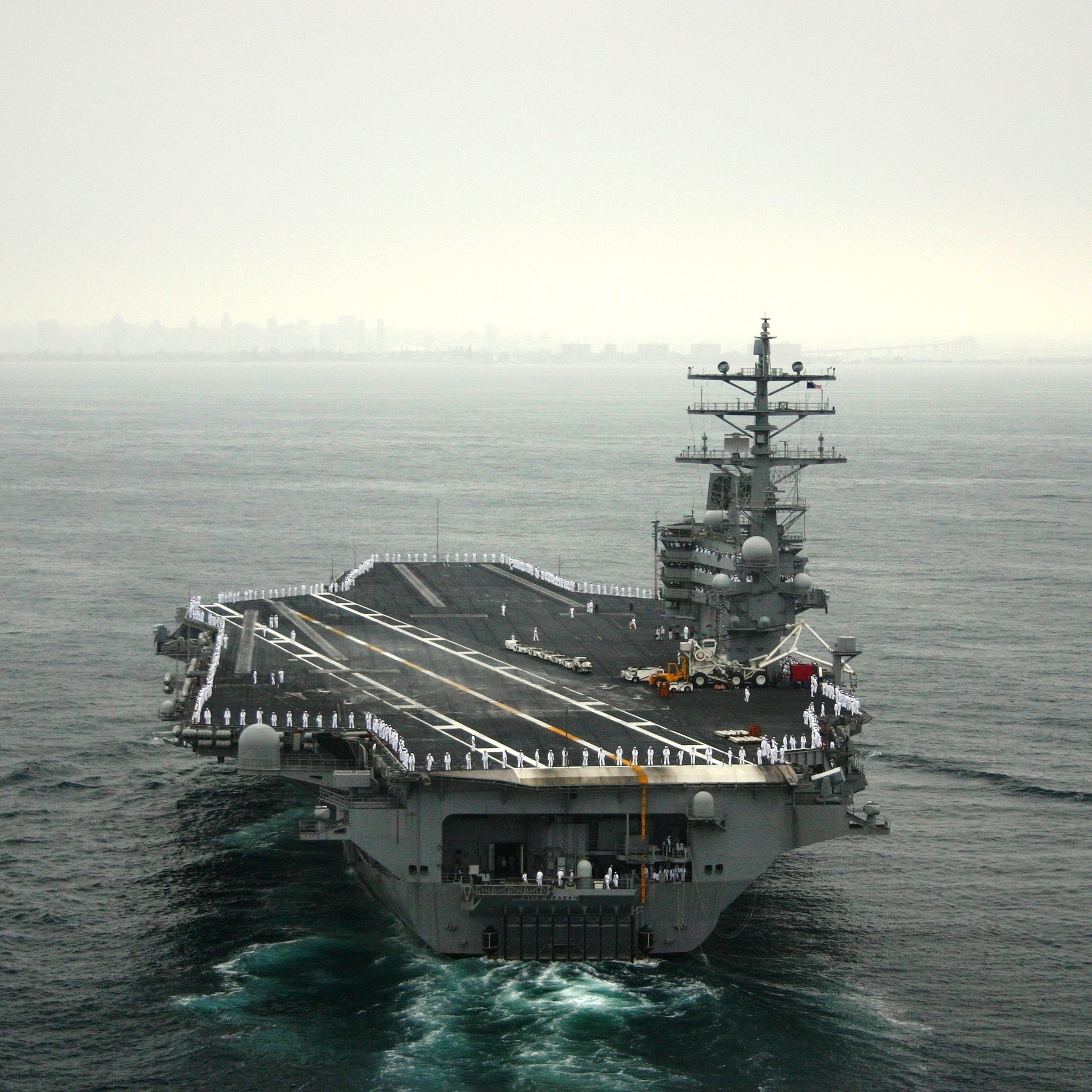Military
Why Aircraft Carriers Are Hard to Sink (Update)

Published:
Last Updated:

(Update: According to a number of sources, China has started to land some of its H-6K bombers on an island in the South China Sea. Military experts says these planes can attack U.S. carrier groups.)
North Korea has threatened to sink the USS Vinson, a Nimitz-class aircraft carrier. Information about these modern carriers shows that are immensely difficult to attack successfully.
The Vinson was launched in 1980 and has been upgraded several times since then. The United States has 10 Nimitz-class carriers. Each is 1,092 feet long and displaces over 100,000 tons of water. The carriers are fast, and can reach a top speed of 30 knots. They have crews of over 5,000 and can hold 90 planes.
According to The National Interest, there are several reasons carriers are very hard to attack, and harder to sink.
First, their speed allows them to outrun many other ships, particularly submarines.
They have “hundreds of watertight compartments and thousands of tons of armor, no conventional torpedo or mine is likely to cause serious damage.”
The carriers also have high-tech sensors that can pick up missiles at great distances. To counter missiles they have “radar-guided missiles and 20 mm Gatling guns that shoot 50 rounds per second.”
Among the most important points The National Interest makes is that carriers are part of large groups of ships, Some of these carry Aegis combat systems, which are highly sophisticated naval defense systems. These groups also include their own submarines and a number of submarine detection methods and deterrents.
The Navy also operates carriers in such a way as to keep them far from potential threats. The National Interest points out that includes staying away from areas that might be mined.
Finally, each time a carrier is overhauled, many of its systems are upgraded. This allows carriers built decades ago to be fitted with current technology. And the Navy also has upgraded the systems on other ships that protect carriers.
The National Interest concludes:
The most important advance of recent years has been the netting together of all naval assets in an area so that sensors and weapons can be used to maximum effect. Initiatives like the Naval Integrated Fire Control – Counter Air program link together every available combat system in a seamless, fast-reacting defensive screen that few adversaries can penetrate.
The North Korean threat against the Vinson makes good headlines, but that is about it.
Finding a qualified financial advisor doesn’t have to be hard. SmartAsset’s free tool matches you with up to 3 fiduciary financial advisors in your area in 5 minutes. Each advisor has been vetted by SmartAsset and is held to a fiduciary standard to act in your best interests. If you’re ready to be matched with local advisors that can help you achieve your financial goals, get started now.
Thank you for reading! Have some feedback for us?
Contact the 24/7 Wall St. editorial team.